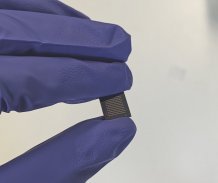Oxford researchers build the world's first ultra-fast photonic supercomputing processor using polarisation
New research uses multiple polarisation channels to carry out parallel processing – enhancing computing density by several orders over conventional electronic chips. 
In a paper published in Science Advances, researchers at the University of Oxford, in collaboration with the University of Exeter, have developed a method using the polarization of light to maximize information storage density and computing performance using nanowires.
Light has an exploitable property – different wavelengths of light do not interact with each other – a characteristic used by fibreoptics to carry parallel streams of data.
Similarly, different polarisations of light do not interact with each other either. Each polarisation can be used as an independent information channel, enabling more information to be stored in multiple channels, hugely enhancing information density.
First author and DPhil student June Sang Lee, Department of Materials, University of Oxford said: "We all know that the advantage of photonics over electronics is that light is faster and more functional over large bandwidths. So, our aim was to fully harness such advantages of photonics combining with tunable material to realize faster and denser information processing."
The research team developed a HAD (hybridized-active-dielectric) nanowire, using a hybrid glassy material that shows switchable material properties upon the illumination by optical pulses.
Each nanowire shows selective responses to a specific polarization direction, so information can be simultaneously processed using multiple polarisations in different directions.
Using this concept, the researchers developed a photonic processor that utilizes polarisations of light to process information.
Computing is carried out through multiple polarisation channels, leading to an enhancement in computing density by several orders compared to that of conventional electronic chips.
For over a decade, researchers in Professor Harish Bhaskaran’s lab in the Department of Materials, University of Oxford, and in Professor Wright’s lab in the Department of Engineering at the University of Exeter, have been looking into using light as a means to supercomputing.
Professor Bhaskaran, who led the work, said: "This is just the beginning of what we would like to see in the future, which is the exploitation of all degrees of freedoms that light offers, including polarisation to dramatically parallelize information processing. Definitely early-stage work – our speed estimates still need research to verify them experimentally – but super exciting ideas that combine electronics, non-linear materials, and computing. Lots of exciting prospects to work on which is always a great place to be in!"
Professor Wright added: "Just a few years ago most people would have thought that computing with light lay within the realms of science fiction, but recent advances mean light-based processors could become a realistic commercial prospect in the not too distant future."
The full paper, Polarisation-selective reconfigurability in hybridized-active-dielectric nanowires, is published in Science Advances.

 How to resolve AdBlock issue?
How to resolve AdBlock issue?